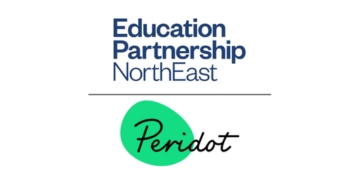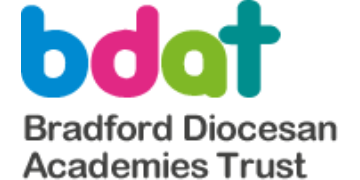Soaring inflation, plunging rolls, staff absences and unfunded pay rises have left the future of scores of academy trusts in doubt as they scramble to plug multi-million-pound holes in their budgets.
Seventy-five trusts – one with a deficit of almost £6 million – raised concerns about their ability to continue operating in 2023-24, a Schools Week investigation found. This is more than double the number the year before.
And over a third of the trusts in financial distress last year have been handed government bailouts or been told by officials that they stand to receive additional financial support stretching into seven figures.
Almost 70 per cent of them were single-academy trusts. Separate findings also show a big rise in the number of council schools subject to a notice of financial concern.
It comes as government officials are working on white paper proposals to set an ambition that all schools are part of a group, multiple sources briefed on the plans said.
‘Terrible toll’
Association of School and College Leaders general secretary Pepe Di’Iasio said: “We recognise that the national finances are tight, but we’re very worried that schools and colleges are expected to do ever more with ever less, and this has a terrible toll.
“We really do need a long-term plan for education in which we are clear about what we expect from schools and colleges, and then make sure they have the resources to deliver those expectations.”
The Department for Education (DfE) revealed last month that more than one in eight trusts last year had an “emphasis of matter” or “material uncertainty” opinion in their annual accounts (13.4 per cent).
This means auditors flagged concerns about the trust’s financial sustainability or the reliability of its accounts, effectively raising risks or doubts about its ability to continue operating without additional support. The number had also risen from 9.9 per cent in 2022-23.
Most of these were for trusts closing or transferring. But risks over financial issues were flagged in 75 sets of trust accounts for 2023-24.
While this only equates to 3.2 per cent of the country’s trusts, it is more than double the 1.3 per cent that issued financial health warnings the year before.
The DfE said the statements are made when “a material uncertainty existed relating to events or conditions that may have cast significant doubt on the trust’s ability to continue as a going concern”.
£5.9m in deficit
Schools Week obtained the names of the 75 – running 264 schools – through the freedom of information act. Our analysis shows 46 of them were in deficit, with four more than £1 million in the red.
The largest deficit was posted by the St Ralph Sherwin Catholic Multi Academy Trust based in Derbyshire (£5.9 million). Accounts show its 25 academies had “collectively been in financial decline for several years” prior to the MAT’s launch in 2018.
But “rising utility costs, challenges in recruiting to key posts, general inflation, staffing absences and the funding versus cost to deliver free school meals” strained the “delicate balance between income and expenditure”.

The Confederation of School Trusts’ (CST’s) annual survey last month revealed that financial sustainability was CEOs’ number one priority this year – for the second year running. Many are looking at cutting classroom staff and leadership redundancies to balance the books.
The trust did not respond to a request for comment.
But finance expert Micon Metcalfe noted that Catholic MATs more generally may be “disproportionately affected” by financial pressures.
This is because “they are wanting to deliver the bishop’s plan for the area and protect small Catholic schools”, which are harder hit by cuts.
iPads and job cuts
The Arthur Terry Learning Partnership (£3.9 million) and the Sherborne Area Schools’ Trust (£1.9 million) had the next-highest deficits. They ran 23 and 18 schools at the time.
Schools Week previously revealed how Arthur Terry had racked up seven-figure losses after purchasing iPads as part of an initiative to provide 11,000 devices for all pupils and staff.
In a letter sent to parents last week, the trust said it was “consulting with staff regarding voluntary redundancy and early resignation programmes”.
But the trust added that the “majority of staff will not be affected by these programmes”, and this was “one of several measures being considered to manage resources responsibly”.
Sherborne’s accounts cited pressures including “the increasing cost and challenge around alternative provision”.
This was “further compounded by high levels of staff absence in the form of the associated costs of backfilling essential frontline teaching roles”.
Andi Brown, of academy consultancy firm SAAF Education, has been called in to help more trusts in financial difficulty over the past six months.
This is due to pay rises not being fully funded, “higher than expected inflation and a general reduction in pupil numbers, particularly in primary schools”, among other things, he said.
“We’re now starting to recommend trusts aim for staff costs to be 75 per cent of total income. Three, four years ago it was 80 per cent.”
The price of inclusion?
The Beckmead Trust – which also appeared on the list – was this week issued with a notice to improve after approaching the government for an emergency bailout amid concerns it would be plunged into a “cashflow deficit”.
A spokesperson for the MAT, which runs 12 special and alternative provision schools, said it went into the red due to “significant delays” for cash “to build new free schools approved by the DfE, and in receiving funding from local authorities”.
Last year, we had to make some very difficult decisions
Broad Horizons Education Trust CEO Owen Jenkins also said its £670,000 deficit reflected “the complexities of bringing together a very diverse family of schools”, including two special schools.
“The commitment to inclusion is not easy to deliver within the current funding context,” he added. “Last year, we had to make some very difficult decisions … and sadly this meant some redundancies, but this did not come at the cost of inclusion.”
Broad Horizons “is now outperforming its approved financial recovery plan and moving into an in-year surplus position”, he added.
Problems not confined to trusts
CST CEO Leora Cruddas stressed that trusts “are not immune from the financial pressures facing all public services”, highlighting that 15 per cent of maintained schools also have a budget deficit.
A separate FOI lodged with the DfE showed 159 local authority-run schools across 26 councils were subject to a notice of financial concern in 2023-24, up from 94 the year before.
These are similar to academy improvement notices, also issued when funding rules are breached. Council schools do not publish details of their accounts, so the reasons for deficits are not as transparent as in academy trusts.
Michael Barton, the National Governance Association’s head of policy, added: “While the summer’s spending review was relatively positive for schools and may offer some short-term relief, it fell short of delivering the scale of investment needed to fully address the financial pressures facing the system.”
Brown warned that even those which “have built up large reserves and can weather this storm a bit better” are “going to start burning through” their savings.
… but some weren’t in deficit
But 28 of the 75 trusts listed in our FOI for flagging concerns were in surplus.
Despite registering a £1.4 million surplus, the Bishop Wheeler Catholic Academy Trust forecast a future “in-year deficit that could deplete [its] remaining cash reserves”.
Among other things, the 16-school trust also pointed to “significant underfunding through the national funding formula over a 10-year period that has become more acute in the last three years”.
Bishop Wheeler said the issue has left its schools “funded at 82 per cent of the minimum level necessary to operate as indicated” by the department’s efficiency benchmarks.
This was “acknowledged” by the DfE, which “indicated” it would “consider providing short-term funding … should it be required”.
The Cornelius Vermuyden School made similar projections, despite recording a £110,000 surplus. This prompted department officials to advise that it “needs to join a multi-academy trust”.
The South East Essex Academy Trust, which is working with the school, said budgets were squeezed, in part, by “reduced pupil numbers” brought on by “local demographic changes and the impact of an Ofsted report”.
A report by the Kreston group of accountancy firms suggested that “if the sector is trying to ensure that it is financially sustainable, then the obvious solution would be for MATs to become large or at least for the smaller MATs to become larger”.
Push for groups of schools
Cornelius Vermuyden was one of 52 single-academy trusts (SATs) included in the list. Just nine were responsible for 10 or more schools.
Of the SATs, 30 (58 per cent) were either secondaries or all-throughs. Thirteen (25 per cent) were in the east of England, 10 (19 per cent) in London and nine (17 per cent) were based in the South-west.
Salvatorian College was the SAT with the largest deficit (£1.4 million). This came after the ESFA “approved a financial facility” of £1.4 million in 2019, of which £1.3 million had been “drawn down” by the end of August 2024.
But trustees believed that “some additional support may be required” and they had “a reasonable expectation” this “would be forthcoming”.
Groups of schools coming together makes absolute sense
The Kreston report showed small MATs – those with fewer than 3,000 pupils – had, on average, surpluses “of just £1,000 [last year] compared to £203,000 in 2022”.
Primary and secondary SATs also tended to be in deficit, according to the analysis.
Institute of School Business Leadership chief Stephen Morales believes Labour’s schools white paper is “likely” to include “encouragement for schools to collaborate and not operate as islands”.
“Groups of schools coming together makes absolute sense and it’s probably the most sustainable way for our system to prevail given the fiscal backdrop.”
Definition of ‘group’ unknown
The Conservative government tried through various white papers to force schools to join trusts, but the plans always failed.
The 2022 white paper included a target for all schools to be in “strong” multi-academy trusts by 2030. There was also an expectation most trusts would have at least 10 schools, or 7,500 pupils. However the plan was later ditched.
It is not known how Labour would define a school “group”. Multi-academy trusts would fit the bill, but also less formal partnerships like council federations could come into consideration.
The government has to do everything possible to keep things running
However it is understood any potential new plan would not force schools into new ownership. £1m bailouts
In all, 22 trusts either received bailouts or had received “indications” they would be given additional financial support.
Among them was Sherborne, which “anticipated future funding/cashflow support from the DfE of up to £1.3 million”. Arthur Terry was also offered a £1.5 million government loan to stay afloat.
Morales said some trusts were “getting too big to fail [as] they have so many children in their care”.
When academies in big struggling MATs cannot be rebrokered, “the government has to do everything possible to keep things running. In the end, it’s their duty to ensure thousands of children in any community are educated.”
















Your thoughts